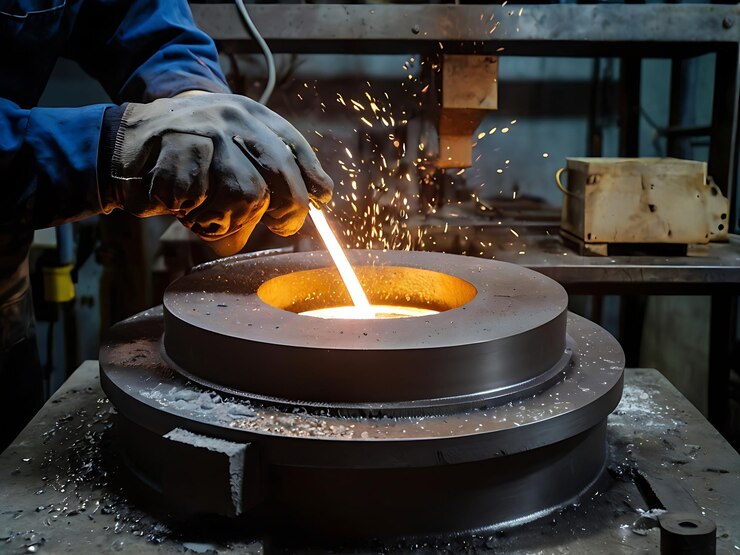Die-casting and over-molding are both manufacturing processes used to create complex components, but they differ significantly in their techniques, materials, and applications. Understanding the pros and cons of each method die die-casting overmolding is crucial for making informed decisions in product development.
Die-Casting
Die-casting is a metal casting process where molten metal is injected into a reusable metal mold under high pressure. Die-casting is a manufacturing process where molten metal is injected under high pressure into a reusable metal mold. This process is used to create complex metal parts with high precision and repeatability.
How it works:
- Molten metal, usually aluminum, zinc, magnesium, or copper alloys, is prepared.
- This molten metal is then injected into a steel mold cavity at high pressure.
- The metal rapidly solidifies within the mold, taking the shape of the cavity.
- The die casting manufacturers in China open, and the finished casting is ejected.
Common applications:
- Automotive parts (engine blocks, transmission housings)
- Electrical components (motor housings, connectors)
- Hardware (door handles, locks)
- Machinery components (gears, pumps)
While die-casting offers many benefits, it also comes with challenges such as high tooling costs and potential environmental concerns.
Pros:
High production rates: Rapid cycle times allow for high-volume production.
Excellent dimensional accuracy: Produces parts with tight tolerances and consistent quality.
Strong and durable: Metal castings offer superior strength and durability compared to plastics.
Thin wall capabilities: Creates intricate parts with thin wall sections.
Cons:
High tooling costs: Die-casting molds are expensive to create.
Material limitations: Primarily used for metals, limiting material choices.
Post-processing: Castings often require additional finishing (machining, polishing) to achieve desired surface quality.
Environmental concerns: Metal casting can generate hazardous waste and emissions.
Over-Molding
Over-molding is a process where one material is molded onto a pre-existing substrate. The overmolded material is typically a polymer, such as thermoplastic or thermoset.Over-molding is a manufacturing process where one material is molded onto an existing component or substrate. It’s a technique that combines the properties of different materials to create a single, unified product.
How it works:
- A base component or substrate is created, often using injection molding, but it can also be made from metal or rubber.
- This substrate is then placed into a mold cavity.
- Molten polymer, such as thermoplastic or thermoset, is injected into the mold, enveloping the substrate and forming a seamless bond.
- The assembly is cooled, and the finished part is ejected.
Common applications of over-molding include consumer electronics, automotive, medical, and industrial products.
Pros:
Versatility: Can combine different materials for enhanced properties (e.g., soft-touch grip, electrical conductivity, durability).
Design flexibility: Creates complex shapes and textures not achievable with single-material processes.
Reduced assembly: Integrates multiple components into a single piece, streamlining production.
Improved aesthetics: Offers opportunities for decorative finishes and color combinations.
Cons:
Higher cost: Typically more expensive than single-material processes due to tooling and material costs.
Design constraints: Material compatibility and mold design limitations can restrict part complexity.
Longer cycle times: The multi-step process can increase production time compared to single-shot molding.
Choosing the Right Process
The decision between die-casting and over-molding depends on various factors:
Part design: Complexity, material requirements, and desired properties.
Production volume: Required quantity of parts.
Cost considerations: Tooling, material, and labor costs.
Material properties: Mechanical, thermal, or electrical properties are required.
Surface finish: Desired appearance of the final product.
Die-casting is ideal for high-volume production of metal parts with precise dimensions and excellent mechanical properties. It is suitable for applications requiring strength, durability, and heat resistance.
Over-molding is preferred for parts that require a combination of materials, complex shapes, and improved aesthetics. It is often used in consumer electronics, automotive, and medical industries.
In some cases, a combination of both processes can be employed to create hybrid components with enhanced performance and functionality.
Read Also:
- 2023 Us Open Day 2 Picks: Expert Predictions For Top Matches
- US Open Tennis Balls Serving Up Controversy, And Perhaps, Players’ Injuries

